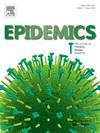Impact of COVID-19 control measures on respiratory syncytial virus and hand-foot-and-mouth disease transmission in Hong Kong and South Korea
IF 2.4
3区 医学
Q2 INFECTIOUS DISEASES
引用次数: 0
Abstract
The public health and social measures (PHSMs) for mitigation/control of COVID-19 pandemic influenced the transmission dynamics of many other infectious diseases, including respiratory syncytial virus (RSV) infection, and hand, foot and mouth disease (HFMD) and their disease-burden. This study aimed to infer the transmission dynamics of these respiratory viruses and assess the impact of COVID-19 PHSMs on their community activity. We developed a compartmental framework to infer the transmission dynamics of RSV and HFMD in Hong Kong and South Korea from January 2014 to May 2024. We assessed the impact of PHSMs by comparing the change in virus transmissibility, reproduction number and population susceptibility before, during, and after the COVID-19 pandemic period. A significant reduction in RSV and HFMD activity was observed starting in January 2020, with a resurgence since late 2021. Transmissibility of both diseases decreased by 46 % - 95 % during the lull, while population susceptibility was estimated to increase by maximum of 19 %. On relaxation of the PHSMs, the transmissibility were recovered up to 70 % in Hong Kong and nearly 100 % in South Korea in 2023 with significant epidemics for these viruses. Strict implementation of COVID-19 PHSMs led to low RSV and HFMD activity, but the absence of community infection resulted in reductions in population immunity, and slightly larger epidemics when these diseases re-emerged following the COVID-19 pandemic.
COVID-19 控制措施对香港和韩国呼吸道合胞病毒和手足口病传播的影响。
为缓解/控制 COVID-19 大流行而采取的公共卫生和社会措施(PHSMs)影响了许多其他传染病的传播动态,包括呼吸道合胞病毒(RSV)感染和手足口病(HFMD)及其疾病负担。本研究旨在推断这些呼吸道病毒的传播动态,并评估 COVID-19 PHSMs 对其社区活动的影响。我们建立了一个分区框架,以推断 2014 年 1 月至 2024 年 5 月期间 RSV 和手足口病在香港和韩国的传播动态。我们通过比较 COVID-19 大流行之前、期间和之后病毒传播能力、繁殖数量和人群易感性的变化,评估了 PHSMs 的影响。从 2020 年 1 月开始,RSV 和手足口病的活动明显减少,2021 年下半年开始重新抬头。在低潮期,这两种疾病的传播率下降了 46% - 95%,而人群易感性估计最多增加了 19%。放宽PHSM后,2023年香港和韩国的传播率分别恢复到70%和近100%,这些病毒将出现显著流行。严格执行 COVID-19 PHSMs 可降低 RSV 和手足口病的活动性,但由于缺乏社区感染,导致人群免疫力下降,当这些疾病在 COVID-19 大流行后再次出现时,流行范围会稍大一些。
本文章由计算机程序翻译,如有差异,请以英文原文为准。
求助全文
约1分钟内获得全文
求助全文
来源期刊

Epidemics
INFECTIOUS DISEASES-
CiteScore
6.00
自引率
7.90%
发文量
92
审稿时长
140 days
期刊介绍:
Epidemics publishes papers on infectious disease dynamics in the broadest sense. Its scope covers both within-host dynamics of infectious agents and dynamics at the population level, particularly the interaction between the two. Areas of emphasis include: spread, transmission, persistence, implications and population dynamics of infectious diseases; population and public health as well as policy aspects of control and prevention; dynamics at the individual level; interaction with the environment, ecology and evolution of infectious diseases, as well as population genetics of infectious agents.
 求助内容:
求助内容: 应助结果提醒方式:
应助结果提醒方式:


